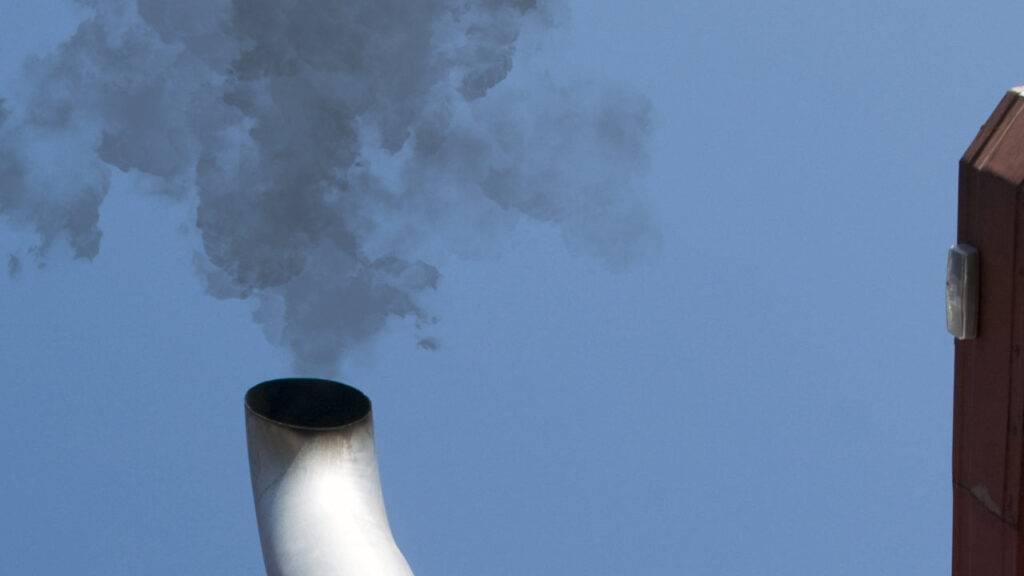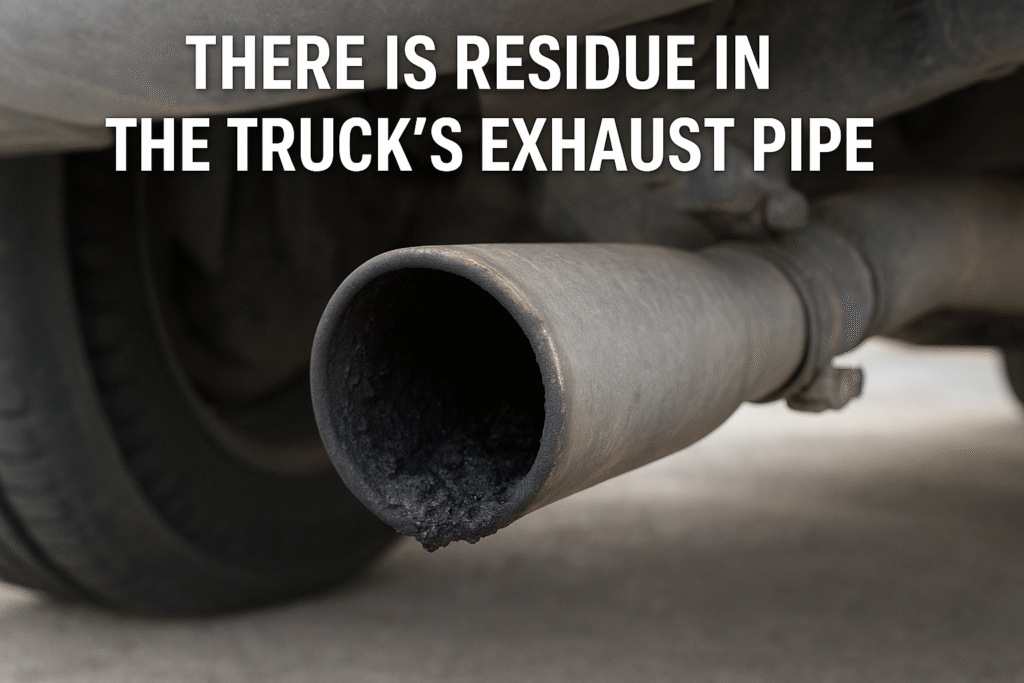Observing the smoke color—black, white, or blue—can help quickly diagnose the problem.
Modern diesel vehicles, particularly those built after 2007, feature Diesel Particulate Filters (DPF) and sometimes SCR/DEF systems to meet emissions standards. Understanding these systems and what smoke colors indicate is essential for engine health, emissions control, and avoiding costly repairs.
What is a Diesel Particulate Filter (DPF)?
DPF is installed in the exhaust system to capture soot and particulate matter produced during combustion.
- Reduces emissions to meet environmental regulations.
- Protects the engine and downstream components from soot buildup.
- Maintains optimal fuel combustion and engine efficiency.
Key point: Except during cold starts or brief break-in periods, a healthy diesel engine should produce almost no visible smoke. Persistent smoke indicates a problem.

Black Smoke: What It Indicates
Black smoke is the most common type of diesel exhaust smoke, usually caused by incomplete fuel combustion.
Common Causes
- Faulty fuel injectors (sticking, worn, or leaking)
- Turbocharger performance issues (insufficient boost)
- EGR valve or cooler malfunction
- Clogged or dirty air filters restricting airflow
- Incorrect fuel injection timing
Consequences
- Excessive soot, which the DPF is designed to trap.
- Continuous black smoke may indicate soot bypassing the DPF.
- Potential damage to SCR/DEF systems downstream.
Solutions
- Inspect, clean, or replace fuel injectors.
- Perform forced DPF regeneration if the filter is blocked.
- Check turbocharger performance and airflow.
- Ensure SCR/DEF systems function correctly.
- Regularly clean exhaust outlets to prevent residue buildup.

White Smoke (Unburned Fuel or Coolant): What It Indicates
White smoke typically comes from unburned fuel or coolant entering the exhaust. Occasional white smoke on cold starts is normal, but persistent white smoke signals a malfunction.
Common Causes
- Malfunctioning fuel injectors
- Poor cylinder compression
- Incorrect injection timing
- Coolant leakage into the combustion chamber (blown head gasket, cracked cylinder head, or turbo leaks)
Example Case
Mercedes-Benz Actros MP4 (2012+): During low-speed or cold start, white smoke appears and RPM fluctuates.
- Possible cause: EGR valve stuck open or coolant leaking into cylinders
- Recommended action: Check EGR fault codes and repair or replace faulty components
Solutions
- Repair or replace malfunctioning injectors
- Conduct cylinder compression testing
- Inspect EGR system and coolant pathways
- Repair any coolant leaks into the combustion chamber
Blue Smoke (Oil Burning): What It Indicates
Blue smoke signals engine oil entering the combustion chamber and burning with fuel, often a serious issue if persistent.
Common Causes
- Worn valve guides or seals
- Damaged piston rings or cylinder walls
- Leaking turbocharger oil seals
- Incorrect or contaminated oil
- Fuel diluting engine oil
Consequences
- Continuous oil burning leads to severe engine wear and contamination of DPF/SCR.
Solutions
- Perform engine compression tests and dyno testing if necessary
- Check oil level and quality; change oil type if required
- Inspect turbocharger, valve seals, piston rings, and cylinders
- Clean or replace contaminated DPF/SCR
Other Considerations for Diesel Smoke
While black and white smoke are common, blue smoke should be rare. If you notice blue smoke, it’s essential to address the underlying issue promptly.
Diesel emissions are regulated in most countries. Persistent smoke may result in fines or failed inspections. Learn more about diesel emission regulations.
Maintenance Tips
- Regular DPF cleaning or regeneration
- Use high-quality diesel fuel and proper oil grade
- Inspect fuel and air systems routinely
- Avoid extended idling at low temperatures to prevent soot buildup
FAQ (Frequently Asked Questions)
Why is my diesel engine producing black smoke?
Black smoke usually indicates incomplete combustion caused by faulty injectors, restricted airflow, turbo issues, or EGR system problems.
What should I do if there is black soot on my exhaust pipe?
Perform a forced DPF regeneration, check fuel injectors, and inspect EGR and turbo systems to prevent residue buildup.
What if I have black residue on my exhaust tail pipe?
Black residue on the exhaust tail pipe usually means excessive soot is not being fully trapped by the DPF. This can be caused by failed components that allow moisture to enter the aftertreatment system, moving soot particles from your DPF filter through the SCR system and onto the exhaust tail pipe. Common failed components include a faulty 7th injector, turbocharger, EGR valve, or outdated software programming. I highly recommend running a forced DPF regeneration, ensuring your exhaust temperatures are correct, and confirming there is no smoke. The tailpipe should always be clean and free of black residue. Regular cleaning of the exhaust outlet is also recommended to prevent buildup.
Why is my diesel exhaust emitting white smoke?
White smoke often comes from unburned diesel or coolant entering the combustion chamber due to injector faults, poor compression, or coolant leaks.
My Mercedes-Benz Actros MP4 emits white smoke at low speed; what should I check?
The EGR valve may be stuck open or there could be a coolant leak. Check for EGR fault codes and inspect related components.
What does blue smoke from my diesel engine indicate?
Blue smoke indicates engine oil is burning. Common causes include worn valve seals, piston rings, turbo oil seal leaks, or incorrect oil.
What should I do if I see abnormal exhaust smoke?
Inspect your engine and after-treatment systems immediately. Using a diesel diagnostic tool can help identify injector, DPF, EGR, or turbo problems before they worsen.


Comments
4 thoughts on “Diesel Engine Exhaust Smoke Explained: Black, White, and Blue Smoke Causes, DPF Function, and Solutions”
this site is my inhalation, very great design and perfect subject material.
I’m no longer sure the place you’re getting your information, however great topic. I needs to spend a while learning much more or understanding more. Thank you for excellent information I used to be looking for this information for my mission.
One thing I’d really like to say is the fact car insurance termination is a hated experience and if you’re doing the best things like a driver you simply will not get one. Many people do obtain notice that they have been officially dumped by the insurance company and many have to fight to get extra insurance after the cancellation. Low-cost auto insurance rates are frequently hard to get from cancellation. Having the main reasons pertaining to auto insurance termination can help motorists prevent getting rid of in one of the most critical privileges offered. Thanks for the concepts shared by means of your blog.
Understanding baccarat patterns is key, but a solid platform matters too. Seamless access via apps & multiple deposit options (like GCash!) on bossjili download apk definitely enhances the experience. Regulatory compliance is a big plus for peace of mind.